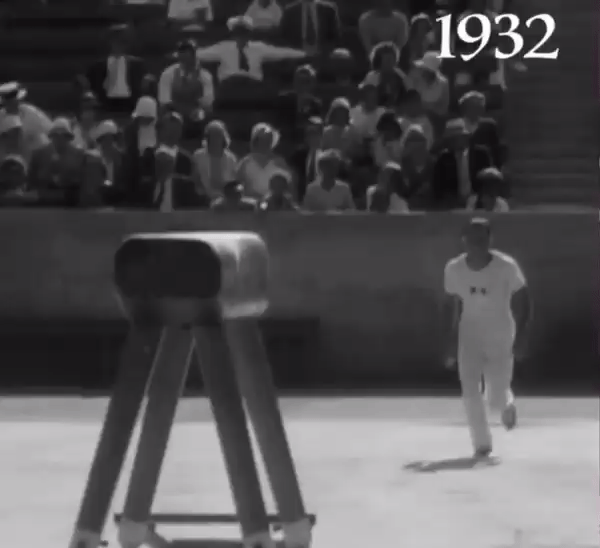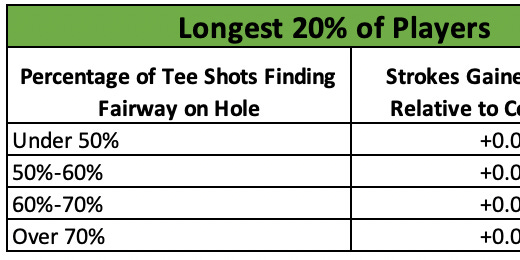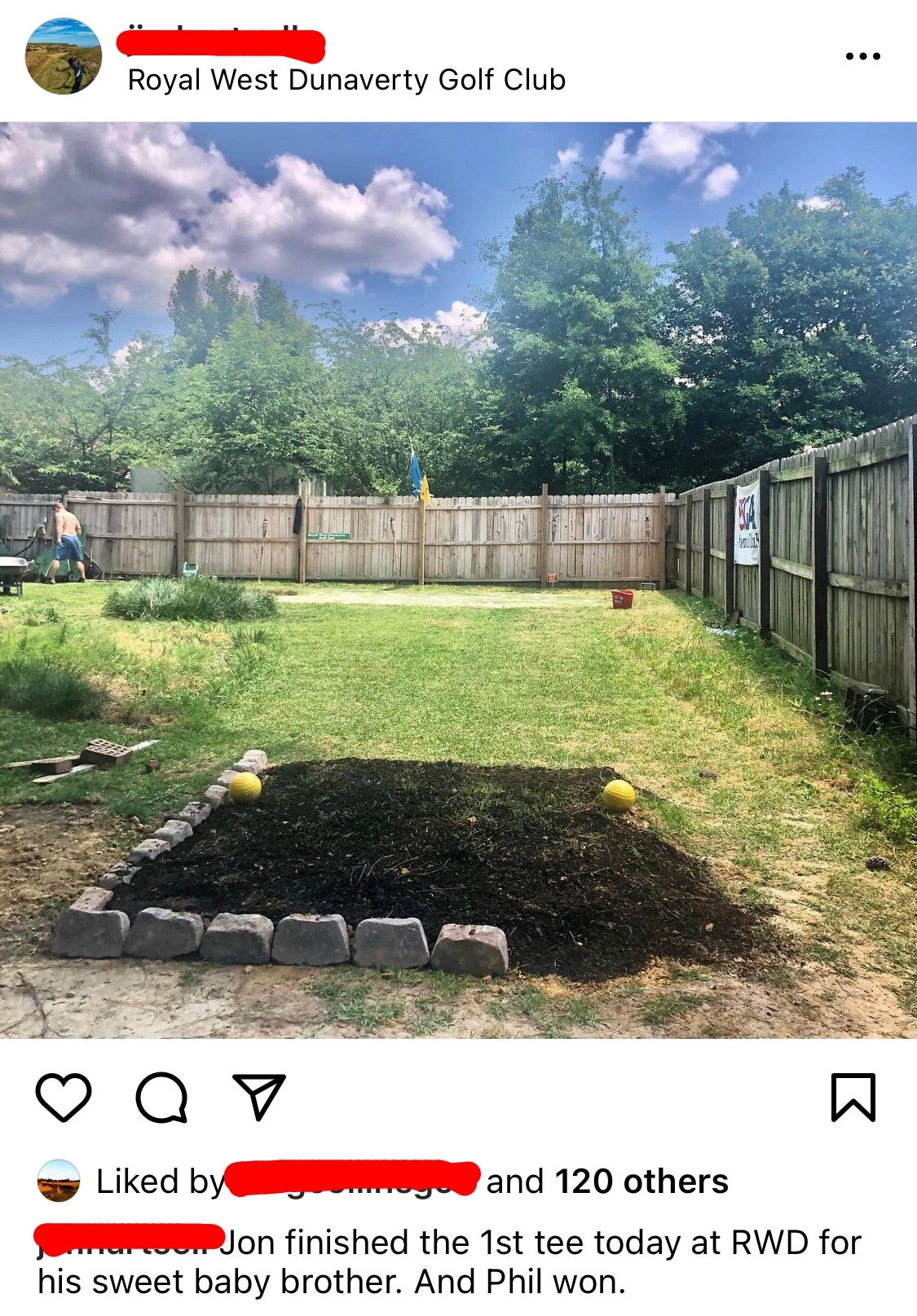Phil, Width as Defense of a Golf Course, and Moneyball in Soccer
Phil
Phil Mickelson won the PGA Championship this weekend, securing his sixth major championship. At the age of 50, Phil Mickelson became the oldest major championship winner in the history of the sport. Much will be written about Phil’s charisma, interactions with fans, career achievements, etc., but I am most impressed with Phil’s resilience.
Since winning a low quality tournament at the beginning of 2019, Phil has rarely sniffed the top of a leaderboard at a PGA Tour event. In October, Phil finished 76th out of 77 players at the ZOZO Championship. Prior to winning this weekend, Phil had registered zero Top 20 finishes in his 14 starts this season. Yet, he shows up and grinds every week.
At the Valero Texas Open in early April, Phil completed his first round with an embarrassing quintuple bogey 10. With almost no chance of making the cut and playing the weekend, Phil showed up for his second round ready to play and carded a strong score even though he was out of contention.
Most PGA Tour weeks, if you scroll to the bottom of the leaderboard, you’ll find a couple names with a “WD” or “DQ” next to their names. Frequently in these cases, the golfer is playing terribly, so he walks off the golf course (WD) or purposefully signs an incorrect scorecard, disqualifying (DQ) himself from the tournament to avoid the embarrassment (and scoring average implications) of posting a bad score. Phil does not do that. He last withdrew from an event in 2014.
Phil posted this tweet two weeks ago:

And now he’s earned another major championship trophy in historic fashion.
Championship Golf: Width as a Defense
As professional golf has evolved over the past few decades, one of the sport’s most striking developments is the pursuit of distance. In the year 2000, Paul Azinger’s average driving distance was 277.5 yards, ranking 50th on the PGA Tour out of 195 qualified golfers. In the year 2020, if you averaged 277.5 yards off the tee, you would have ranked dead last on the PGA Tour in driving distance.
Many will argue that this is due to an increase in athleticism from modern athletes; golfers did not lift weights in the 1980s. Fair enough, but that argument paints only a fraction of the picture. 48-year-old Stewart Cink hits the ball about 20 yards farther now than he did 20 years ago. You’ll be shocked to discover that this increase cannot be attributed to his biceps.
Rather, technological advancements have enabled golfers to swing with much more speed than they could two decades ago. Why? Because a mishit modern golf ball with a modern driver will not fly nearly as far off line from a player’s target as it used to. Today’s equipment is more forgiving than the clubs you’ll find in your grandparents’ garage. Makes sense.
So that is one reason players are chasing distance. The other primary reason players pursue distance is statistical analysis demonstrating the value of distance: Gaining distance is one of the most reliable ways to improve performance. A reasonable estimate: Gaining 20 yards off the tee will lower your scoring average by about 0.08 strokes per hole, which ends up being worth about one stroke per round.
Twenty-five years ago, a long-hitting professional golfer arrived on the golf scene and began dominating immediately. That golfer, of course, is Tiger Woods. Distance is not the only reason Tiger took over the sport, but it’s a relevant piece of the story.
Conventional wisdom tends to suggest that to combat distance, you should narrow the fairways and lengthen the rough surrounding fairways. Make it challenging for the long, inaccurate players and reward the accurate players! Here’s the issue: That tactic is ineffective; in fact, it ends up providing the longest players with the biggest advantage. Firestone Country Club and Bay Hill are two courses fitting this profile: long holes, narrow fairways, thick rough. Tiger Woods has won each event eight times.
The data bears this out:
Sample interpretation of the tables: On holes where under 50% of players hit the fairway, the longest 20% of players outperform their competitors by 0.04 strokes per hole. Interestingly, the shortest hitters demonstrate the same pattern: as a fairway becomes more difficult to hit, a shorter player increasingly underperforms.
Initially, you may find this counter-intuitive, but these are sensible results. If you hit it 30 yards past me and we’re both in the fairway, I’m in trouble. If you hit it 30 yards past me and we’re both in the rough, I’m dead. When you narrow the fairway too much, particularly when the golf course is firm, accurate players are unable to realize their accuracy: it’s too difficult to hit the fairway.
If a player hits a shot 340 yards into the air and off target into the rough or a hazard, he’ll be in trouble with 70+% of his competitors in the fairway. The longest player on Tour, Bryson DeChambeau, has registered two wins during this PGA Tour season: the U.S. Open at Winged Foot and the Arnold Palmer Invitational at Bay Hill – these are narrow courses with thick rough. He’s finished outside the Top 25 in four stroke play events this season, two of which were at Augusta National, a golf course with wide fairways and short rough that presents challenging angles to wayward tee shots. The other two performances were each of the past two weeks, at two wider-than-average courses.
If you want accuracy to reap a reward, play more holes that look like this:
…and fewer that look like this:
Leading into this past weekend’s PGA Championship at the Ocean Course at Kiawah Island, I was optimistic about the width profile of the golf course. I expected a harsh penalty for an errant tee shot. I expected Bryson DeChambeau to struggle. Though I was disappointed in how a few of the holes tested the professionals, this week was a welcomed departure from many PGA Tour courses. If you appreciate a comprehensive test of a golfer’s skill set, hope for more venues like the Ocean Course or Pinehurst, and fewer like Torrey Pines, the site of the 2021 U.S. Open in June. Hello, Bryson.
Moneyball in Soccer
I stumbled across this article highlighting a unique approach that Pacific Media Group is taking to find an edge in European soccer. Pacific Media Group, the ownership group of Barnsley FC and a couple of other soccer teams, has invested in analyzing soccer performance intelligently and differently than their competitors. The team has a low budget and must find ways to discover undervalued talent.
In the late 1990s, Billy Beane faced a similar challenge as the general manager of the Oakland Athletics. Ultimately, he discovered inefficiencies in baseball, and the Athletics were competitive despite maintaining a low budget. The movie Moneyball chronicles his strategy. In 2017, Billy Beane invested in Barnsley FC.
Here is how I understand their strategy. Barnsley plays a funky style of soccer where the ball is often in the air. Whenever the team has the opportunity, they’ll send players into their opponent’s box and lob the ball in. They are less concerned with controlling the ball and more concerned with creating chaotic situations near their opponent’s goal. In other words, “Let’s create high variance, high pressure situations near their goal because we will benefit from that situation more often than our opponents will.” For example, if there’s a penalty, that will benefit the offense disproportionately to the team on defense because it will result in a penalty kick for the offense (a really big deal) versus just gaining possession for the defense (less of a big deal).
I do not know the specifics of the calculation, but it seems like a clever approach. Create chaos near their goal and it will benefit our team more often than it hurts us. They must have also concluded that creating this chaos results in more scoring opportunities than taking a traditional approach, without leaving themselves vulnerable to a counter attack.
Importantly, implementing a unique approach carries several additional benefits. The team can find cheap players on the market who fit their playing style. A player might be available/undervalued because he’s played poorly in conventional styles, but if he has attributes that will produce success for Barnsley FC, the team can grab him cheaply.
Moreover, Pacific Media Group owns multiple teams and is looking to expand. They’re committed to playing the same style across their teams, hoping to leverage the efficiencies of owning multiple teams by moving players around. Players who are used to that playing style!
Anyway, apparently it’s working. Barnsley FC had a wildly successful season, almost securing promotion to the Premier League amidst competition with 10x their payroll. Not too bad!
Backyard Golf
On a bit of a somber note, this weekend I came across a public social media post from a person within the golf industry who lost his son tragically last week:
I didn’t expect any follow-up posts, but he posted again shortly after Mickelson’s win:
For me, the posts served as an important reminder that the game represents many different things to many different people across the world. Golf is often ridiculed as the epitome of extravagance, exclusivity, and privilege. Overall, pretty fair criticism! But for every $600 per round, resource-inefficient golf course, there are countless stories like the above. Golf does not need to be expensive and opulent, and many people across the world are taking initiatives to lower the barrier of entry to enjoying the game of golf.
Other Content I Enjoyed This Week:
I mostly just watched the PGA Championship, but I did see the unbelievably impressive clip of Simone Biles (click tweet to see) making history, and this tweet had me laughing:



Contact/Feedback
Email: joseph.lamagnagolf@gmail.com
Twitter: @JosephLaMagna








